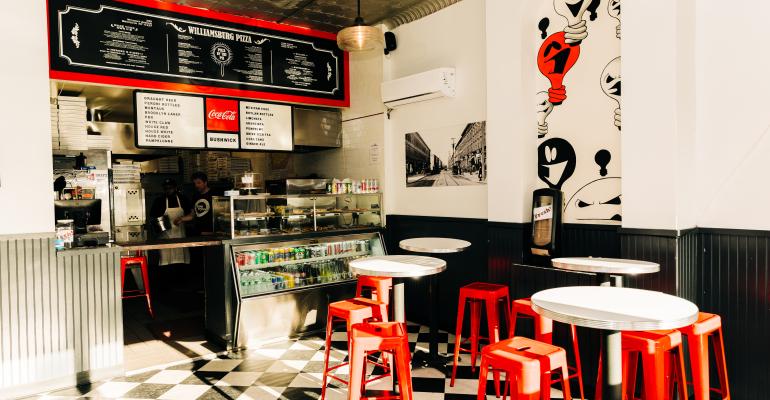Last year was all about the Web3-based loyalty programs, where major restaurant chains jumped head-first into the metaverse, and customers had to learn a whole new language of blockchain and NFT terms. But now, restaurant operators of all sizes are taking a stab at the next generation of rewards programs, many of which run on blockchain technology but relegate the confusing tech terminology to the background. Six-unit, Brooklyn-based pizzeria, Williamsburg Pizza, is partnering with loyalty platform Hang to roll out its first digital loyalty program, with unique tiered rewards that range from coupons and free garlic knots to all the way up to a trip to Italy.
“I just feel like Web3 is going to become a bigger and bigger part of like our lives over time,” Williamsburg Pizza owner Aaron McCann said. “general, the world is filled with these loyalty programs where you get a free something minor every once in a while, or there’s a convoluted points system that you don’t even understand how it works…but if loyalty was more fun, people would be more engaged.”
Although the Williamsburg Pizza loyalty program is not an app, Hang does have what is known as a progressive web app (an app icon that takes you to a mobile site), where customers can earn “mystery boxes” that can be accumulated over time and/or cashed in for rewards and prizes, both for spending money and for posting about Williamsburg Pizza on social media. The brand is even setting up quests and challenges for fans like “post a photo of Williamsburg Pizza on social media and get 40 points in return,” which doubles as both gamification for customers and free marketing for the brand.
If you use the box right then and there, you might earn a free slice, cookie, or garlic knot, but you could also hold on to the box over time, and it can level up. There are up to seven levels, and even though the loyalty program was only launched two weeks ago, some of McCann’s most loyal customers are already on level two. The higher-level prizes might include $20 gift cards, 50% off an entire order—culminating in a trip to an Italian farm that is making tomatoes for the Italian food industry.
“The user's membership card is actually an NFT, but this is one of those Web3 applications, where the technology is really running behind the scenes and the vast majority of customers using it won't even realize it’s blockchain technology,” McCann said. “It’s primarily there for future interoperability for me to do collaborations…It’s not really like a traditional form of tradable NFTs…. I believe Hang just felt that the blockchain would be better for the interoperability going forward and didn't really think that the NFT component needed to be super forward.”
Williamsburg Pizza is not the only smaller restaurant brand getting into digital rewards and loyalty programs. Baltimore-based Atlas Restaurant Group — which just launched its app and loyalty program this summer — believes that digital investments like rewards, guest data, and subscription perks can be just as useful for fine-dining restaurants as it is for quick-service chains. Additionally, Blackbird Labs — from Eater and Resy cofounder Ben Leventhal — wants to shake up the restaurant business model with its loyalty platform. Like Hang, Blackbird Labs is backed by blockchain and offers unique, customizable rewards.
Although customers might be more used to racking up rewards points for quick-service places like Starbucks or McDonald’s, these loyalty programs are a smart way for smaller restaurants to compete with larger chains for app real estate on a customer’s smart phone. McCann said that thus far, consumer reaction has been exciting, even though the program has only been rolled out to two stores, with more to come. The goal, he said, is to turn more one-time customers into regulars by getting them excited about the possible rewards:
“How many of your customers come to your restaurant once and never come back, or twice and never come back? And what does it take to turn them into super customers?” McCann asked. “Initially, we're really just going to try and move the needle on, you know, limiting the overall percentage of people who just pop in once….Because you really do start to notice that once a person has come three or four times, they start to become regulars. And that’s one of the main games of this industry.”
Contact Joanna at [email protected]





